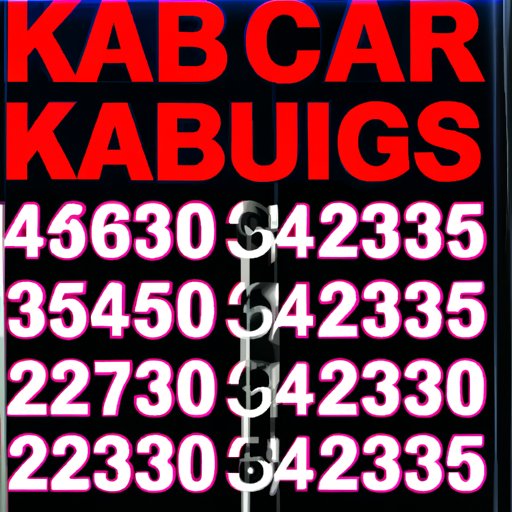Introduction
Dancing is an enjoyable and effective form of exercise that can help you stay fit, lose weight, and even improve your mental health. But how many calories do you actually burn when you’re dancing? This article will explore the calorie-burning potential of different types of dancing and provide tips for incorporating more dancing into your routine.

Comparing the Calories Burned in Different Types of Dancing
When it comes to calories burned from dancing, the intensity of the activity makes all the difference. Low-intensity dancing, such as a slow waltz, burns fewer calories than medium- or high-intensity dancing. According to Harvard Health Publishing, a 155-pound person can expect to burn roughly 82 calories by engaging in 30 minutes of low-intensity dancing, 113 calories with medium-intensity dancing, and 169 calories with high-intensity dancing.
How Intensity Affects the Number of Calories Burned from Dancing
The intensity of a dance workout affects the number of calories burned by increasing or decreasing the body’s energy expenditure. Factors that increase calorie expenditure include the speed and complexity of the dance steps, the length of the dance session, and the dancer’s weight and muscle mass. On the other hand, factors that decrease calorie expenditure include the type of music used, the amount of rest taken during the dance session, and the dancer’s age and overall fitness level.

Exploring the Benefits of Dancing for Weight Loss
In addition to burning calories, dancing offers several other benefits that make it an ideal exercise for weight loss. One benefit is its cardiovascular effects. According to a study published in the journal Medicine & Science in Sports & Exercise, dancing can improve cardiovascular health by increasing heart rate, decreasing resting heart rate, and improving aerobic capacity. Additionally, dancing can help build muscle and improve flexibility, which can further aid in weight loss efforts.
Mental health benefits are another major reason why people choose to dance for exercise. Research published in the journal Frontiers in Psychology found that dancing can reduce stress, improve mood, and increase self-esteem. Furthermore, dancing can be a social activity, which can help foster relationships and enhance a sense of community.
An Overview of the Calorie-Burning Potential of Popular Dance Styles
Different styles of dancing offer varying levels of calorie-burning potential. Latin dances such as salsa, merengue, and cha-cha-cha tend to be more intense than ballroom dances like the tango, foxtrot, and waltz. Hip-hop and street dances like breakdancing and popping require significant bursts of energy, while freestyle dance involves improvisation and can range from low to high intensity.

Tips for Incorporating More Dancing into Your Routine
If you want to incorporate more dancing into your routine, there are a few key steps you can take. First, set realistic goals for yourself. Start small and gradually increase the frequency and intensity of your dancing sessions. Secondly, find a partner or group of people to dance with. Dancing with someone else can help motivate you and make the experience more enjoyable.
Thirdly, find an appropriate class or instructor who can teach you the basics of the style you’re interested in. Finally, get creative and find ways to make dancing part of your daily life. Put on some music and have a dance party, or use the time spent waiting in line to practice some steps. Even a few minutes of dancing can be beneficial.
Calculating Your Personal Calorie Expenditure from Dancing
To get a more accurate estimate of your personal calorie expenditure from dancing, you can calculate your basal metabolic rate (BMR) and track your activity level. To calculate your BMR, you can use the Harris-Benedict equation, which takes into account your age, gender, height, and weight. Once you have your BMR, you can use a calorie calculator to estimate how many calories you burn per minute of dancing based on your activity level.
Conclusion
Dancing is a great way to stay active, lose weight, and improve your physical and mental health. Depending on the intensity of the dance and other factors, you can burn anywhere from 82 to 169 calories per 30 minutes of dancing. To get the most out of your dance workouts, set goals, find a partner or group to dance with, find an appropriate class, and get creative. With a little bit of effort, you can easily incorporate more dancing into your routine.
(Note: Is this article not meeting your expectations? Do you have knowledge or insights to share? Unlock new opportunities and expand your reach by joining our authors team. Click Registration to join us and share your expertise with our readers.)
